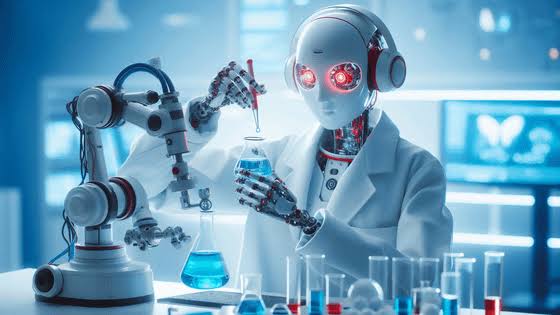Apptronik’s Apollo Robot: Mastering Complex Tasks with Remarkable Speed
Apptronik’s Apollo robot has made significant strides in its development, particularly in learning to perform complex tasks like pick-and-place with deformable items in just 10 hours of training. This showcases its adaptability and potential for transforming industries such as manufacturing and healthcare.

Apollo, a humanoid robot standing 5’8″ and weighing 160 pounds, is designed to work alongside humans with a focus on versatility and efficiency. It can lift up to 55 pounds and operates on swappable batteries, which allows it to work for extended periods without needing to recharge.The robot’s force-control architecture and modular design enable it to safely interact with humans and be customized for various applications, whether as a full-body walker, a torso on wheels, or a stationary unit. Currently, Apollo is being tested for tasks like moving boxes in warehouses, and it’s positioned as a potential game-changer in logistics and beyond.
Wandercraft Unveils First Autonomous Walking Exoskeleton
Wandercraft has achieved a groundbreaking milestone by developing the first exoskeleton capable of natural, autonomous walking without the need for crutches. This innovative exoskeleton represents a significant advancement in assistive technology, offering unprecedented mobility for individuals with lower limb disabilities. Unlike previous models that required crutches for balance, Wandercraft’s new exoskeleton uses advanced algorithms and sensors to mimic natural gait, providing a hands-free walking experience.

This development is expected to have a profound impact on the lives of those who rely on exoskeletons for mobility, as it brings them closer to experiencing the freedom of natural movement. The exoskeleton’s ability to operate autonomously without external support could also open up new possibilities for rehabilitation and everyday use, further pushing the boundaries of wearable robotics.
Gemini Live Demo Stumbles Twice During Major Event
During the “Made by Google” event on August 13, 2024, Google’s AI assistant, Gemini, encountered significant challenges during a live demonstration. The demo aimed to showcase Gemini’s ability to integrate with Google Calendar by having it check the presenter’s availability for an upcoming concert. However, the AI assistant faltered not once but twice, failing to generate a response both times. This unexpected hiccup led to an awkward pause, with the presenter humorously hoping for “demo spirits” to be on their side before a third attempt finally succeeded.

The incident highlighted the unpredictable nature of live tech demos, even for a company as experienced as Google. Despite the eventual success on the third try, the earlier failures overshadowed what was meant to be a display of Gemini’s advanced capabilities. The event, which also featured the launch of the Pixel 9 Pro XL and other devices, continued, but the demo failure served as a reminder of the complexities involved in developing and showcasing cutting-edge AI technology.
Introducing The AI Scientist: Revolutionizing Scientific Research
Sakana.ai has launched “The AI Scientist,” the world’s first AI system designed to automate the entire scientific research process, from ideation to peer review. This groundbreaking system leverages large language models (LLMs) to generate and implement research ideas, run experiments, and produce scientific papers. The AI Scientist even includes an LLM-based reviewer to critique and refine the work, mimicking the human scientific process. This innovation promises to accelerate scientific discovery by continuously generating new research directions and refining them through an automated cycle of experimentation and review.

The AI Scientist has already demonstrated its potential by generating research papers with novel contributions in areas like language modeling and machine learning. The system, which was developed in collaboration with researchers from the University of Oxford and the University of British Columbia, marks a significant step towards fully automated open-ended scientific discovery. Sakana.ai has open-sourced the project, allowing the broader scientific community to explore and build upon this cutting-edge technology.
Grok 2 Release: Elon Musk’s Latest AI Breakthrough
Elon Musk’s xAI has officially launched Grok 2, the latest iteration of its advanced AI language model, available in both standard and mini versions. This release marks a significant leap in AI capabilities, especially in reasoning, text, and vision understanding. Grok 2 outperforms its predecessor, Grok 1.5, in various academic benchmarks, including math, science, and coding tasks, and is designed to be more intuitive and versatile, making it highly effective for a wide range of applications from general knowledge queries to complex problem-solving.

Grok 2 introduces groundbreaking features, including an image generation capability that allows users to create and share images directly through the platform, a feature made possible through collaboration with Black Forest Labs. This model is currently available in beta for premium users and will soon be accessible to developers via an enterprise API. Grok 2 is expected to be a game-changer in the AI space, offering users a more seamless and powerful experience.
